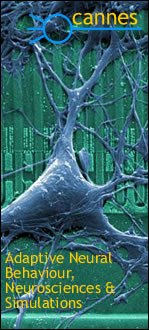|
Research |
Neural NetworksNeural models are modeled at a variety of grains of resolution, from the simpler McCulloch-Pitts neurons, the leaky integrator model in which firing rate is a simple nonlinear function of membrane potential (each neuron is modeled as a single compartment), to multiple compartmental models that incorporate active membranes and a variety of channels. Such models may or may not incorporate mechanisms of synaptic plasticity. In addition, some modelers use mechanisms of synaptic weight adjustment which are not intended to represent learning but are simply identification procedures - i.e., given an overall "architecture" (connectivity pattern) for a neural network, these procedures seek settings of weights (and, possibly, other parameters) which allow the architecture to approximate desired properties. One simulation system developed to support modeling and simulation of general purpose neural networks is NSL - Neural Simulation Language.
Multi-Level Neural NetworksA current research thrust is the extension of large neural networks and behavioral systems to include modeling of detailed neurons. This extension focuses in the integration of NSL with subneural modeling tools, such as GENESIS (Wilson and Bower 1989), and NEURON (Hines 1994). This task is part of the research project entitled Multi-Level Modeling in Neural Networks: A Computational and Experimental Approach, which integrates ASL and NSL, besides linking to neurobiological data base systems. |
